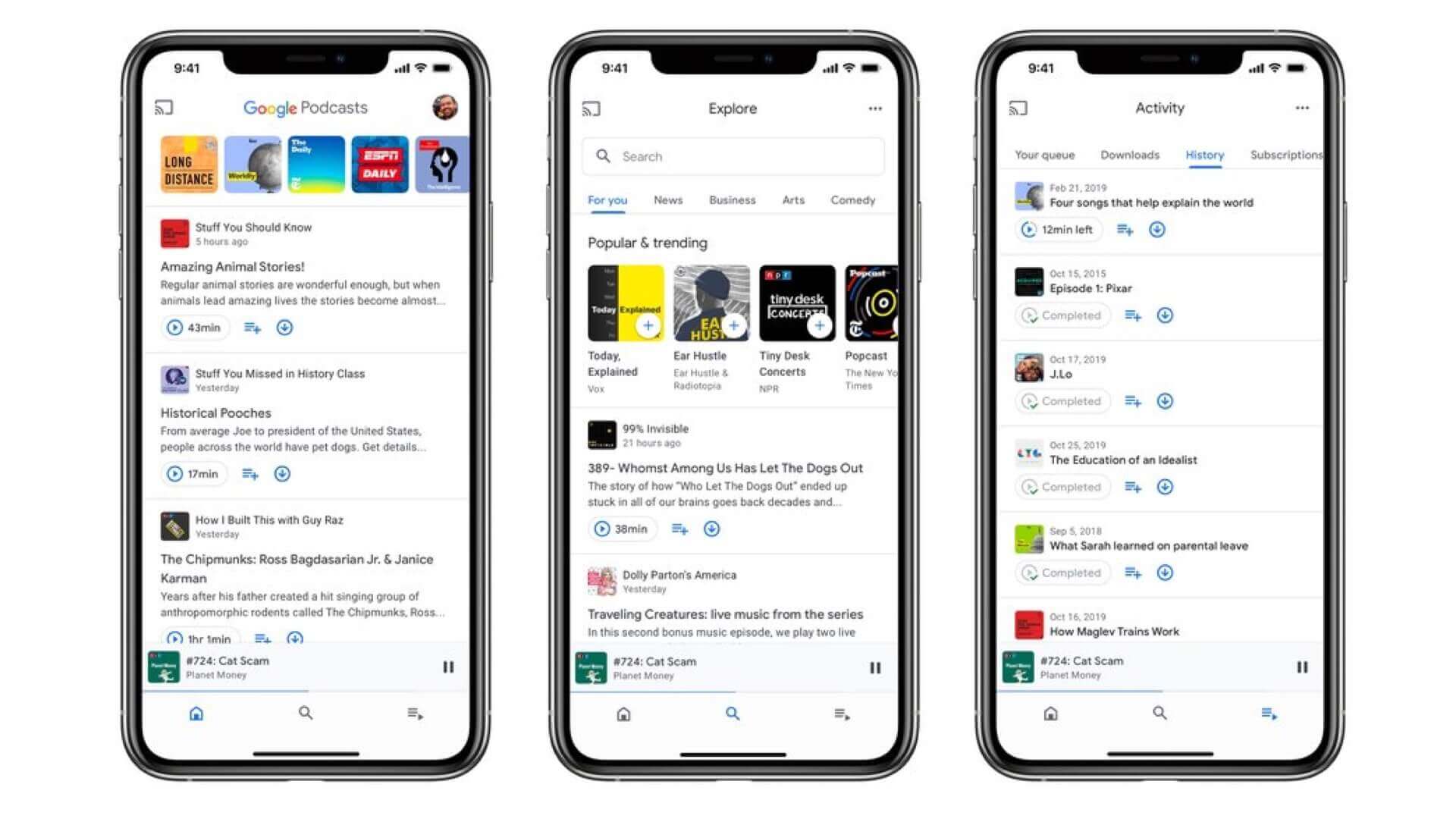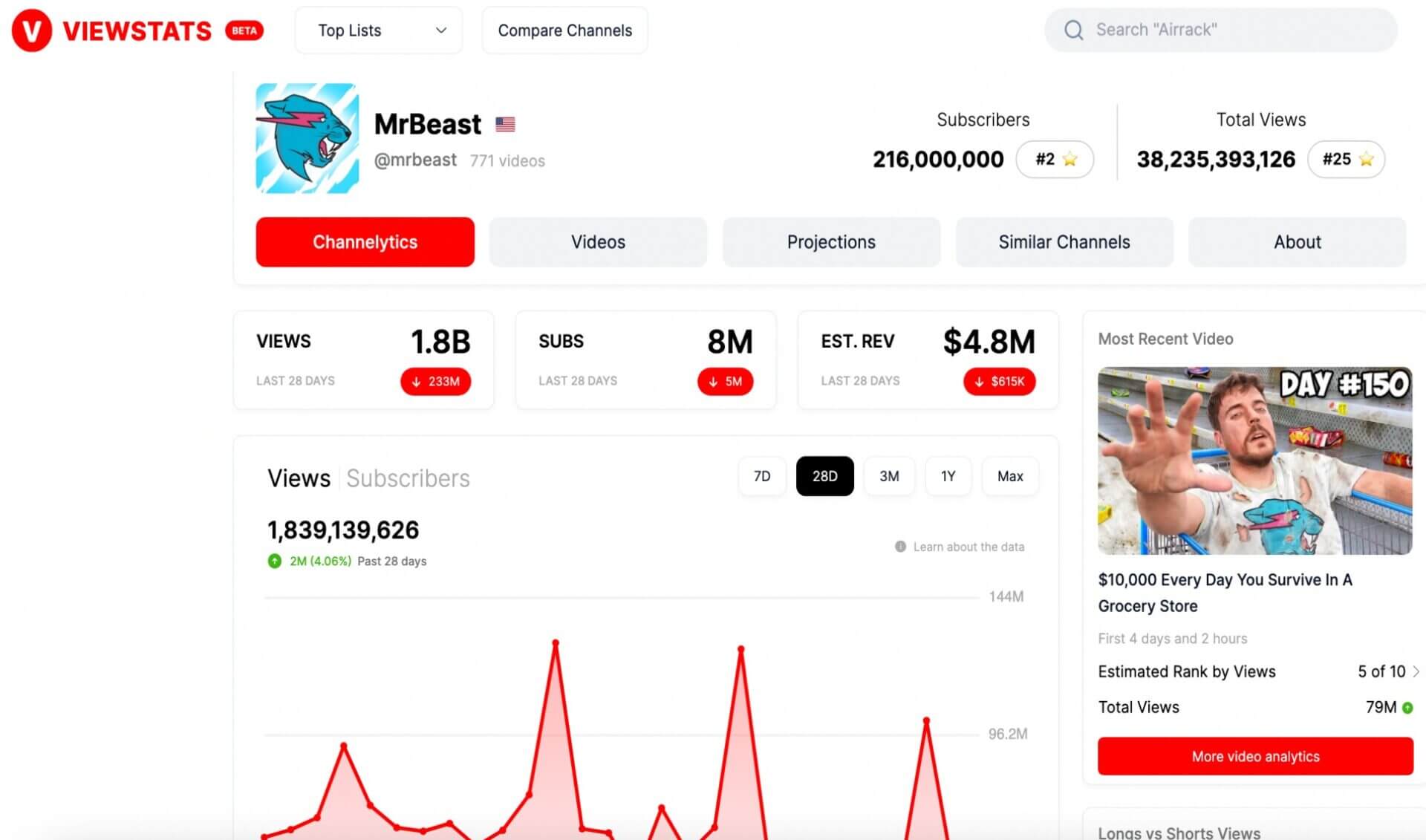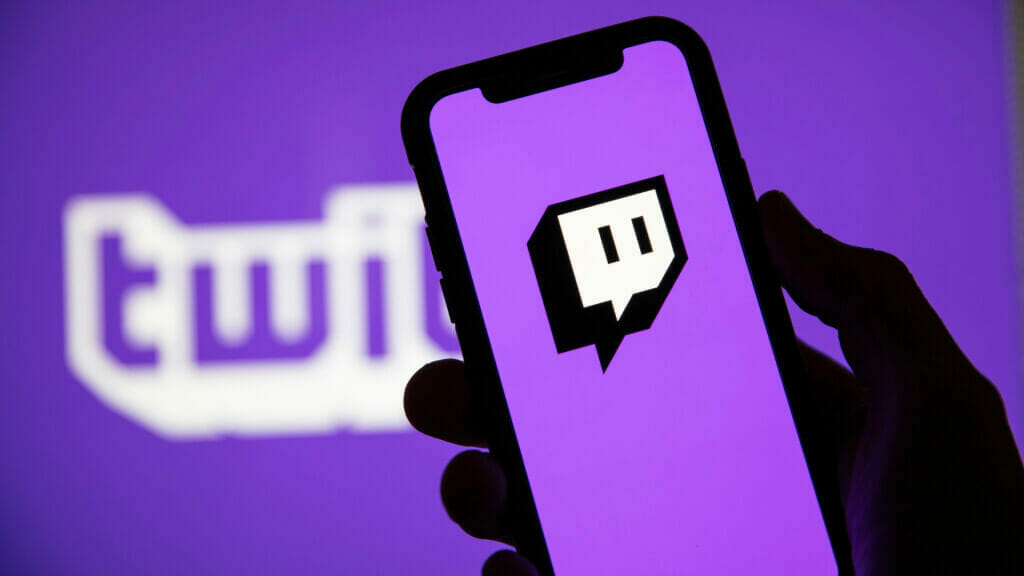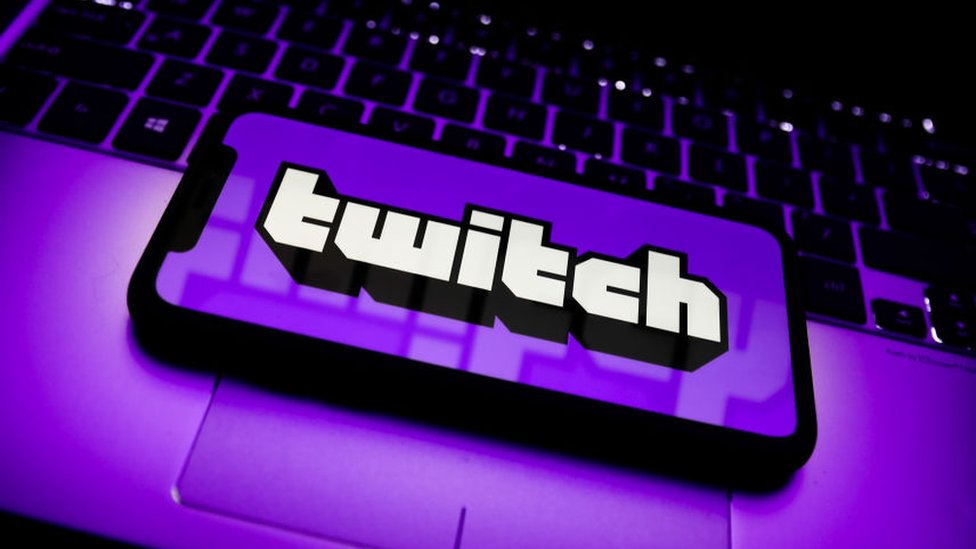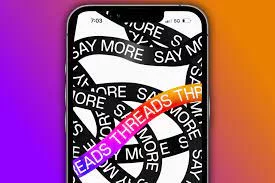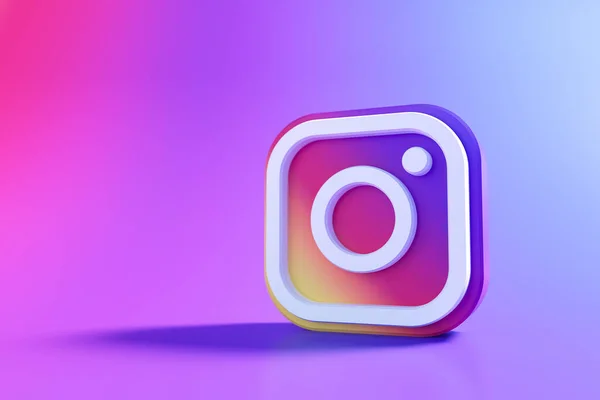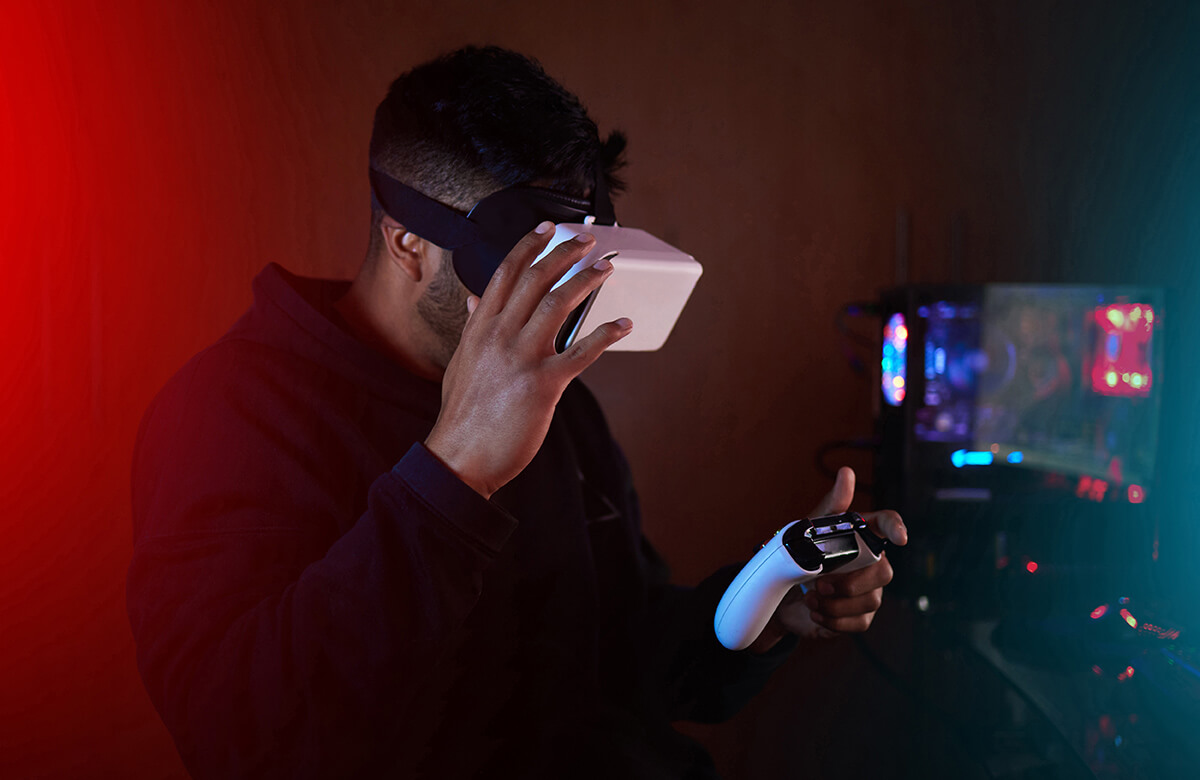In a strategic move ahead of the planned shutdown of its Podcasts service in April 2024, Google has introduced a podcast export tool, enabling users to seamlessly transfer their podcast subscriptions to YouTube Music or other platforms. The tool is currently accessible to users in the United States and will gradually become available to a wider audience in the future. Google’s Podcasts export feature allows users to initiate the transfer process through both the mobile and web versions of Podcasts. By selecting “Export Subscriptions” from the menu, users can opt to export their subscriptions to YouTube Music. The process begins with a click on the “Export” button. This strategic move comes after Google’s earlier announcement that it would be discontinuing its Podcasts app, offering users an alternative platform for their podcast needs. Although the migration process may take some time, Google emphasizes the significance of the tool, providing users with a practical solution to safeguard their podcast subscriptions. However, it is important to note that not all podcasts may be immediately available on YouTube Music during the migration. To address this, Google allows users to save missing podcasts to their library through the show’s RSS feed link. The launch of this export tool aligns with Google’s commitment to offering users a smooth transition from Podcasts to alternative platforms. While currently limited to the US audience, Google has promised to update users when the export tool becomes available in other regions. As a part of its broader plan, Google had previously stated that listeners would have until March 2024 to continue using Google Podcasts, with an additional grace period until July 2024 to export their subscriptions. The introduction of the export tool reinforces Google’s dedication to facilitating a seamless experience for its users amid the forthcoming changes to its podcast services. This move underscores the broader trend within the tech industry, with companies continuously refining their service offerings and adapting to user preferences. Google’s provision of a user-friendly migration tool reflects its commitment to maintaining customer satisfaction and ensuring a smooth transition during the ongoing evolution of its product portfolio. Source: Tool Battles
Jimmy Donaldson, better known as MrBeast, has ventured into the realm of analytics with the launch of ViewStats, a dedicated platform for YouTube channel analytics.
Shortly after unveiling updates to its content policy, Twitch has decided to retract the allowance for “artistic nudity.”
The streaming platform, known for its struggles in moderating such content consistently, Twitch is now allowing certain previously restricted material, provided it comes with a warning label.
Mark Zuckerberg, CEO of Meta, recently announced that Threads, Meta’s social networking platform, is undergoing testing to make Threads posts accessible on Mastodon and other platforms supporting the ActivityPub protocol. Embracing interoperability with the decentralized social media landscape known as the “fediverse,” which includes Mastodon and Pixelfed, aligns with Meta’s commitment to providing users with diverse interaction options and broadening content reach. The move toward decentralization has been a strategic goal for Threads, reflecting Meta’s acknowledgment that embracing interoperability is essential for staying relevant to a new generation of creators. By integrating with the ActivityPub protocol, Threads aims to contribute to the open social web and foster a more inclusive digital environment. This interoperability test represents a significant step for Threads, signaling Meta’s dedication to exploring decentralized social networking. While the current test may not fully federate the entire social network, it underscores Meta’s commitment to ActivityPub and the broader open social web. The testing phase will likely reveal more details about the integration and how it enhances user experiences across different platforms. In July, Instagram head Adam Mosseri emphasized the importance of decentralization for Threads, stating that interoperability could make Meta a more appealing platform for creators. Meta had previously introduced features like account verification through Mastodon, demonstrating goodwill toward the fediverse. The ongoing test may offer only a partial view of a federated social network, with limited features such as viewing Threads posts on Mastodon. The complete scope of ActivityPub integration and potential cross-posting functionalities between Mastodon and Threads remains to be seen. As Meta progresses with the testing phase, users may gain insights into how Threads will contribute to the evolving landscape of decentralized social media. Note: The current test focuses on displaying Threads posts on Mastodon and ActivityPub-supporting services. Source: Tool Battles
Instagram is evolving its user experience with the addition of a new feature that allows users to share video notes through its Notes feature. Previously limited to text and emoji messages of up to 60 characters, Notes now supports brief video statuses, each lasting just two seconds. Intriguingly, these videos can only be captured via the front-facing camera, with no option to share pre-recorded videos. As part of this expansion, Notes also gains support for photos, audio messages, stickers, and GIFs. Users can send replies to Notes, appearing as direct messages (DMs), resembling reactions to Instagram Stories. Introduced almost a year ago, Notes’ statuses are visible for 24 hours and are accessible only to mutual followers or individuals on the user’s “Close Friends” list. Despite the previous limited impact of Notes, Instagram’s latest updates aim to make the feature more engaging and appealing to users. Video notes serve as a novel way to share brief, expressive moments, contributing to the platform’s dynamic nature. While Notes has been positioned as a potential alternative to X, formerly known as Twitter, Meta’s launch of Threads and Instagram Stories has led to Notes remaining in a somewhat experimental stage. The platform’s future developments may determine whether Notes gains widespread adoption or undergoes further refinement. Source: Tool Battles Note: Availability of the Notes feature may vary, and users can check for its presence in their Inbox to create and view Notes.
In the world of sponsorship marketing, there’s a common misconception that atypical brand niches such as Home Improvement, Woodworking, or Landscaping cannot find success with social media marketing and influencer sponsorships. However, the reality is that there is a wealth of high-value creators in each of these niches who can bring tremendous value to brands through their content. The Rise of Niche Content Creators Atypical brand niches have seen a significant rise in dedicated content creators who specialize in their respective fields. These creators have emerged as experts within their niches, possessing in-depth knowledge, skills, and a genuine passion for what they do. Their content resonates with a highly engaged and targeted audience, making them valuable partners for brands seeking to tap into these niche markets. Let’s take a closer look at a few examples of how content creators in Home Improvement, Woodworking, and Landscaping have leveraged their influence through sponsorships to reach their audience effectively: Home Improvement: Home improvement content creators, such as DIY enthusiasts and renovation experts, have become influential figures within the niche. They produce engaging videos, tutorials, and before-and-after transformations that inspire and educate their audience. These creators often partner with brands that offer products and services relevant to the home improvement industry. For example, a content creator specializing in bathroom renovations might partner with a bathroom fixture brand or tool manufacturing company to showcase their products in a renovation project video. By doing so, the creator not only provides valuable content to their audience but also promotes the brand’s products in an authentic and practical manner. Woodworking: Woodworking content creators have gained substantial popularity on platforms like YouTube and Instagram. They share their craftsmanship, woodworking techniques, and project ideas with their dedicated audience of fellow woodworkers and enthusiasts. These creators often collaborate with brands that specialize in woodworking tools, equipment, and supplies. For instance, a woodworking content creator might partner with a brand known for its high-quality chisels to demonstrate their usage in a detailed tutorial video. This type of sponsorship integration allows the creator to showcase the brand’s products while providing educational and entertaining content to their audience. Landscaping: Landscaping content creators, such as gardeners, landscape designers, and plant enthusiasts, have cultivated engaged communities eager to learn about gardening techniques, plant care, and landscaping ideas. These creators often collaborate with brands that offer gardening tools, plant care products, or even outdoor furniture. For example, a landscaping content creator might partner with a brand specializing in organic fertilizers to create a video series on maintaining a healthy garden using their products. By aligning themselves with the creator’s expertise and reach, the brand can effectively target gardening enthusiasts and showcase the benefits of their products. These examples demonstrate the potential for content creators in obscure brand niches to integrate sponsorships seamlessly into their content. By collaborating with brands that align with their niche and resonate with their audience, these creators can create valuable and authentic partnerships that benefit both parties. The key to successful sponsorships lies in finding the right balance between promotional content and engaging, informative content. Content creators in these niches understand the importance of maintaining trust and authenticity with their audience. They carefully select brands that offer genuine value and are relevant to their niche. By doing so, they ensure that their sponsored content enhances their audience’s experience rather than interrupting it. Building Authenticity and Trust Working with content creators in atypical brand niches offers a distinct advantage when it comes to building authenticity and trust with the audience. Home improvement, woodworking, and landscaping enthusiasts highly value the opinions and recommendations of creators who share their passion and have established themselves as authorities in their respective fields. By partnering with these creators, brands can tap into the trust and credibility they have developed, allowing them to build authentic connections with their target audience. Here’s why building authenticity and trust through content creators is essential in these niches: Shared Passion and Expertise: Content creators in atypical brand niches are passionate individuals who genuinely love what they do. They have spent years honing their skills, gaining knowledge, and perfecting their craft. This shared passion and expertise create a strong bond with their audience, who admire and trust their recommendations. When brands collaborate with these creators, they align themselves with individuals who have already established themselves as credible sources in the niche. This association lends authenticity to the brand’s message and products, making it more likely to resonate with the audience. Authentic Storytelling: Content creators have a unique ability to tell stories that resonate with their audience. They can share personal experiences, showcase their projects, and demonstrate how specific products have played a significant role in their work. By partnering with creators, brands can tap into this authentic storytelling approach. When creators share their genuine experiences and opinions about a brand’s product or service, it creates a powerful connection with their audience. The audience perceives the brand as being endorsed by someone they trust, which increases their willingness to engage with and consider the brand’s offerings. Relatable Content: Content creators in atypical brand niches have a deep understanding of their audience’s needs, challenges, and aspirations. They create content that resonates with their audience on a personal level, addressing their pain points and offering valuable solutions. When brands collaborate with these creators, they can leverage their ability to create relatable content. Whether it’s sharing tips and tricks, showcasing innovative techniques, or recommending products, creators can integrate the brand seamlessly into their content in a way that feels natural and relevant. This relatability fosters trust and encourages the audience to engage with the brand’s offerings. Community Engagement: Content creators in these niches have built thriving communities of like-minded individuals who actively engage with their content. These communities serve as a platform for discussions, shared experiences, and recommendations. By partnering with creators, brands gain access to these highly engaged communities and can participate in meaningful conversations. This direct engagement not only helps the brand understand its target audience
Virtual Reality refers to a simulated experience that can be similar to or completely different from the real world. VR technology typically involves wearing a head-mounted display that immerses users in a computer-generated environment, often accompanied by motion tracking and interactive controllers. VR technology has made significant strides in recent years, with improved graphics, increased affordability, and a broader range of content. This has led to a surge in popularity and adoption of VR across various sectors, including gaming, entertainment, education, and training. One new notable headset is the Meta Quest 3 by Meta Augmented Reality overlays digital content onto the real world, enhancing users’ perception and interaction with their environment. AR experiences are typically accessed through mobile devices or smart glasses, allowing users to see and interact with virtual objects in real-time. AR has found applications in fields such as advertising, retail, healthcare, and tourism. For instance, AR allows customers to try on virtual clothing or visualize furniture in their homes before making a purchase. What is Mixed Reality? Most recently, Apple released their Vision Pro which is ‘Mixed Reality’, or a combination of both VR and AR. Apple’s Vision Pro mixed reality headset presents exciting opportunities for sponsorships and content creators. With its ability to transform any room into a personal theater and provide stunning visuals, content creators can deliver immersive and engaging experiences to their audiences. The 3D camera feature allows creators to capture spatial photos and videos, offering a new level of storytelling and enhancing the sponsored content they produce. The collaborative capabilities, such as life-size FaceTime calls and app-based collaboration, enable content creators to connect and collaborate with sponsors and colleagues in a more immersive and interactive way. Additionally, the visionOS spatial operating system empowers creators to develop innovative apps that fill the space around users, providing unique sponsorship opportunities that extend beyond traditional screens. The customizable environments and EyeSight feature also enhance brand integration possibilities, allowing sponsors to create branded virtual landscapes and ensuring that content creators remain connected with their audience while using the headset. The Vision Pro headset may open up new avenues for sponsorships and will enable content creators to deliver captivating and immersive sponsored content experiences to their viewers. The potential of VR and AR as platforms for content creation and consumption VR and AR offer unprecedented opportunities for content creators to craft immersive and interactive experiences. Users can engage with content on a more personal and engaging level, enabling new forms of storytelling, gaming, and education. Content creators in VR and AR must adapt their storytelling techniques to leverage the immersive nature of these technologies. They face challenges such as developing engaging narratives, designing intuitive interactions, and ensuring compatibility with various VR and AR platforms. Sponsorships involve brands collaborating with content creators to promote their products or services. In the digital landscape, sponsorships provide a means for brands to reach targeted audiences through authentic and engaging content. Sponsorships offer content creators financial support and resources to create high-quality content. Brands benefit from increased brand visibility, access to the creator’s dedicated fan base, and the opportunity to align their products or services with relevant content. VR and AR provide a unique canvas for brands to create memorable and interactive experiences that seamlessly integrate their products or services. Monetization Models for VR and AR Content Creators Creating premium content and offering subscription-based access: Content creators in the VR and AR space can cater to their dedicated audience by creating premium content and offering subscription-based access. This model allows creators to offer exclusive and high-quality experiences that are only available to subscribers. By providing access to a range of immersive experiences, such as advanced levels, special events, or unique storylines, content creators can offer added value to their most loyal fans. Subscribers gain the benefit of experiencing content that goes beyond what is available to the general public, creating a sense of exclusivity and reward for their support. Building communities and offering additional perks to subscribers: Subscription-based models not only provide access to premium content but also allow content creators to build communities and offer additional perks to subscribers. These perks can include early access to new releases or updates, behind-the-scenes content that provides insights into the creative process, or exclusive merchandise tied to the VR or AR experience. By offering these additional benefits, content creators can foster a sense of belonging and engagement within their subscriber community. Subscribers feel a closer connection to the creator and fellow subscribers, creating a space for interaction, discussions, and shared experiences. This sense of community can be further strengthened through exclusive events, Q&A sessions, or even virtual meet-ups, where subscribers can directly engage with the content creator and each other. Subscription-based models provide content creators with a more sustainable and consistent revenue stream compared to one-time purchases or ad-based models. They allow creators to focus on creating high-quality content without being solely dependent on sponsorships or ad revenue. By offering premium content and additional perks to subscribers, content creators can reward their most dedicated fans and cultivate a loyal and supportive community. Subscribers, in turn, receive enhanced access and benefits, along with the satisfaction of directly supporting the creators they admire. The subscription-based model not only offers financial stability but also promotes a sense of belonging, exclusivity, and shared experiences. It allows content creators to continuously innovate and produce captivating VR and AR content, knowing they have a dedicated audience willing to support their creative endeavors. The subscription model encourages ongoing engagement and relationship-building between creators and subscribers, fostering a mutually beneficial connection that drives the growth and sustainability of the VR and AR ecosystem. In-App Purchases and Microtransactions Integrating virtual goods and in-app purchases within VR and AR experiences: Content creators have the opportunity to monetize their creations by integrating virtual goods and in-app purchases within VR and AR experiences. These virtual goods can include items such as digital accessories, clothing, furniture, or even virtual currency that users can acquire and use within
Newsletters have become a popular medium for delivering curated content, industry insights, and valuable information directly to subscribers’ inboxes. Beyond providing valuable content, newsletters also offer a unique opportunity for creators to monetize their efforts through sponsorships. In this comprehensive guide, we will explore the world of newsletter sponsorships, including strategies for securing brand deals, integrating sponsors effectively, and maximizing revenue potential. The Value of Newsletter Sponsorships Newsletter sponsorships provide a win-win situation for both creators and brands. Creators can monetize their newsletters while maintaining the trust and engagement of their audience. At the same time, brands gain access to a highly targeted audience and the opportunity to promote their products or services. Here are a few examples of tech newsletters and the types of sponsors they often collaborate with: Tech Insights Weekly: This newsletter focuses on delivering the latest tech industry news, product reviews, and insights. Tech software companies, SaaS providers, and consumer electronics brands often seek sponsorship opportunities with “Tech Insights Weekly” to reach their target audience of tech enthusiasts. Entrepreneur’s Edge: Targeting aspiring and established entrepreneurs, this newsletter offers valuable advice, tips, and resources for business growth. Business software providers, productivity tools, and professional development platforms are examples of potential sponsors seeking to connect with the “Entrepreneur’s Edge” audience. Building Your Subscriber Base: Before actively seeking brand deals, it’s important to establish a solid subscriber base. While there is no specific threshold for the number of subscribers required to secure sponsorships, though a larger and more engaged audience tends to attract more interest from brands. Here are some strategies to grow your newsletter subscribers Compelling Opt-in Incentives: Offer valuable content upgrades, exclusive resources, or access to a community to incentivize readers to subscribe. Cross-Promotion: Collaborate with other newsletter creators or influencers in related niches to cross-promote each other’s newsletters and gain exposure to new audiences. Social Media Promotion: Leverage social media platforms to promote your newsletter and engage with potential subscribers. Encourage your existing audience to share and recommend your newsletter to their networks. Crafting an Attractive Sponsorship Proposal: When approaching brands for sponsorship deals, it’s crucial to create a compelling sponsorship proposal that highlights the value you provide and aligns with their objectives. Consider the following elements when crafting your proposal: Audience Profile: Provide an overview of your subscriber demographics, including their interests, preferences, and engagement metrics. Showcase the relevance and value of your audience to potential sponsors. Engagement Statistics: Share key metrics such as open rates, click-through rates, and conversion rates to demonstrate the level of engagement and interaction your newsletter generates. Sponsorship Options: Present different sponsorship opportunities, including banner ads, sponsored content, dedicated newsletters, or exclusive offers to capture the brand’s interest. Tailor these options to align with their goals and target audience. Integrating Sponsors Effectively: To maintain the trust and engagement of your subscribers, it’s essential to integrate sponsors seamlessly into your newsletters. Consider the following approaches: Native Content: Craft sponsored content that matches your newsletter’s style and tone, providing value to your audience while highlighting the sponsor’s offerings. Curated Recommendations: Recommend sponsored products or services as part of your regular content, positioning them as valuable resources or solutions for your readers. Exclusive Offers: Provide exclusive discounts or promotions for your subscribers, creating a sense of exclusivity and added value. Nurturing Long-Term Partnerships: Building strong relationships with sponsors is key to recurring revenue and long-term partnerships. Consider the following strategies to nurture sponsor relationships: Deliver on Promises: Ensure that you meet the agreed-upon deliverables and deadlines, providing sponsors with a positive experience. Communication and Feedback: Regularly communicate with sponsors, providing updates, seeking feedback, and addressing any concerns or suggestions they may have. Track Performance: Monitor and share campaign performance metrics with sponsors, demonstrating the impact of their sponsorship and the value they receive. Which metrics should you track for your newsletter? When it comes to tracking metrics for your newsletter, it’s important to focus on key performance indicators (KPIs) that provide insights into the engagement and effectiveness of your content. Here are some metrics that newsletters should consider tracking: Open Rate: This metric measures the percentage of subscribers who open your newsletter. A high open rate indicates that your subject lines and preview text are compelling and resonating with your audience. Click-through Rate (CTR): CTR measures the percentage of subscribers who click on a link within your newsletter. It reflects the level of interest and engagement your content generates. Tracking CTR helps you identify the topics, calls-to-action, or sections that resonate most with your audience. Conversion Rate: Conversion rate measures the percentage of subscribers who take a desired action, such as making a purchase, signing up for a webinar, or downloading a resource. By tracking this metric, you can evaluate the effectiveness of your newsletter in driving desired outcomes. Subscriber Growth: Keep track of the growth rate of your subscriber base. This metric helps you understand the success of your audience acquisition efforts and the overall reach of your newsletter. Unsubscribe Rate: Monitor the rate at which subscribers choose to unsubscribe from your newsletter. A high unsubscribe rate may indicate that your content or frequency does not align with subscribers’ expectations. Analyze this metric to identify potential areas for improvement. Bounce Rate: Bounce rate measures the percentage of undeliverable emails due to invalid email addresses or other technical issues. A high bounce rate can impact your overall deliverability and email reputation. Time Spent on Page: If you have a web version of your newsletter or drive traffic to a landing page, tracking the average time spent on the page can give you insights into how engaged your audience is with the content. Longer average time spent indicates higher engagement and interest. Social Media Shares: Monitor the number of shares your newsletter content receives on social media platforms. This metric provides an indication of the virality and reach of your content beyond your subscriber base. Revenue or Conversion Value: If your newsletter includes sponsored content or affiliate links, track the revenue generated or
Photography is not only an art form but also a profession that offers endless possibilities for creative expression. In addition to capturing memorable moments and stunning visuals, photographers can leverage brand sponsorships and sponsored content creation to create additional income streams. In this blog post, we will explore how different niche photographers, including wedding photographers, lifestyle/family photographers, product photographers, fashion photographers, and portrait photographers, can tap into the power of brand partnerships and monetize their passion. Photography Content Niches Wedding Photographers: Wedding photographers can forge partnerships with brands that cater to engaged couples and the wedding industry. Collaborating with wedding dress designers, bridal boutiques, wedding planners, florists, jewelry designers, and other vendors allows photographers to create sponsored content that features their work alongside these brands. By showcasing their skills and incorporating sponsored products and services, wedding photographers can not only enhance their portfolios but also earn additional income. Lifestyle/Family Photographers: Lifestyle and family photographers have the opportunity to collaborate with brands that cater to families, parenting, and everyday living. From children’s clothing brands and toy companies to home decor and lifestyle products, photographers can integrate sponsored items into their photo shoots, offering authentic and relatable content for their audience. Additionally, partnering with family-focused publications, blogs, or social media accounts can open doors to sponsored campaigns and collaborations. Product Photographers: Product photographers can form partnerships with brands that require high-quality images of their products for marketing purposes. E-commerce businesses, small brands, and startups often seek professional product photographers to capture visually appealing images that highlight the features and qualities of their products. By showcasing these brands’ products in their portfolios and collaborating on sponsored content creation, product photographers can establish themselves as experts in their field while generating additional income. Fashion Photographers: Fashion photographers can collaborate with fashion brands, designers, stylists, and fashion publications to create captivating visual content. From editorial shoots to brand campaigns and lookbooks, fashion photographers can showcase their skills and elevate their portfolios by incorporating sponsored garments, accessories, and beauty products. Collaborating with fashion influencers or bloggers can also lead to sponsored content opportunities that amplify the reach of their work. Portrait Photographers: Portrait photographers have the opportunity to partner with a wide range of brands, depending on their specific niche. For example, fitness portrait photographers can collaborate with athleisure brands, fitness equipment companies, or gyms to capture dynamic images that showcase the brand’s products or services. Similarly, beauty and wellness portrait photographers can collaborate with skincare brands, makeup artists, and wellness retreats to create visually stunning content that promotes these brands. How Brands can Sponsor Photographers In the dynamic world of photography, brands play a significant role in empowering photographers to unleash their creativity. These brands provide cutting-edge software or hardware solutions and seek meaningful collaborations with photographers to showcase their products, educate the community, and foster innovation. Pre-launch Campaigns: When brands are preparing to release, for example, a new camera model, they often collaborate with renowned photographers to build anticipation and generate excitement. These partnerships involve exclusive access to the camera, allowing photographers to test and create content with the upcoming product. By sharing their experiences and insights through blog posts, social media content, and behind-the-scenes videos, photographers can create buzz around the new camera and generate interest among their followers. Sponsored Content Creation: Once the new camera is launched, brands can engage photographers in sponsored content creation. This collaboration involves photographers using the latest camera in their professional work, capturing stunning images that highlight the camera’s capabilities and features. These images can be shared on social media, photography platforms, and brand websites, showcasing the real-world applications of the camera and inspiring other photographers to explore its potential. Reviews and Tutorials: Brands often collaborate with photographers to create in-depth reviews and tutorials of new camera models. These collaborations can take the form of blog posts, YouTube videos, or live webinars, where photographers share their hands-on experiences, discuss the camera’s performance, and provide tips for maximizing its potential. By partnering with photographers who have a strong online presence and expertise in their niche, brands can leverage their credibility and reach to educate and engage a wider audience. Post-Processing Software Tutorials: Brands can collaborate with photographers to create educational content centered around post-processing software. These partnerships can involve creating tutorial videos, online courses, or live workshops where photographers demonstrate editing techniques, share tips and tricks, and showcase the capabilities of the software. By aligning with experienced photographers who are skilled in post-processing, brands can provide valuable learning resources that enhance the skills of photography enthusiasts and promote the usage of their software products. Product Integration: When software brands introduce new features or updates, they can collaborate with photographers to showcase the practical applications of these advancements. Photographers can create before-and-after examples, case studies, or project walkthroughs, highlighting how the latest software capabilities enhance their workflow, improve image quality, or enable creative experimentation. These collaborations not only educate the photography community but also demonstrate the continuous innovation and value offered by the software solutions. Community Engagement: Brands can engage photographers in community-driven initiatives, such as photo contests, challenges, or ambassador programs. By partnering with photographers to promote these activities, brands encourage user participation and create a sense of community among photographers who use their software and hardware. This fosters a vibrant ecosystem where photographers can connect, learn from one another, and showcase their skills, while brands strengthen their relationships with their user base. Brands that sponsor photographer content creators Camera Gear Brands: Camera gear brands understand the value of partnering with photographers to showcase their products and build brand awareness. These collaborations often involve providing photographers with the latest camera bodies, lenses, and accessories to capture stunning images. For example: Canon: As one of the leading camera manufacturers, Canon collaborates with photographers to promote their new camera releases. By providing photographers with early access to their latest models, Canon gains exposure through the photographers’ work and valuable feedback. Nikon: Nikon sponsors photographers to showcase the capabilities of

